New Chapter of Entertainment’s Long Tail Finally Emerges
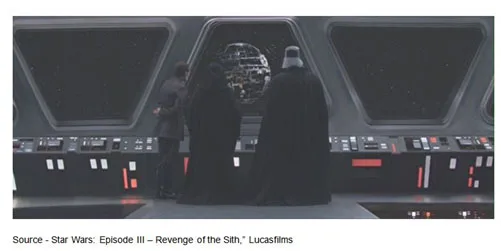
It’s plain to see that NAB (National Association of Broadcasters) doesn’t mean the sole focus is on big TV nets or huge studios.
It hasn’t been for a number of years.
It’s a bunch of small/really small studios, government/business in-house studios and tens of thousands of independent filmmakers who want to create/distribute content – documentaries, educational films, entertainment – that they believe in … and make a decent living while they’re at it.
It’s possible because the world moved to 4K UHD faster than even the most optimistic analyst projected and there’s a rush to find 4K content to show on the super crisp screens – TV sets, computers, tablets and smartphones.
It’s even more possible because all of the tools – cameras, camera mounts, switchers, displays, power workstations, digital editing/workflow and Petabytes of storage devices – are economic, easy to integrate and easy to use.
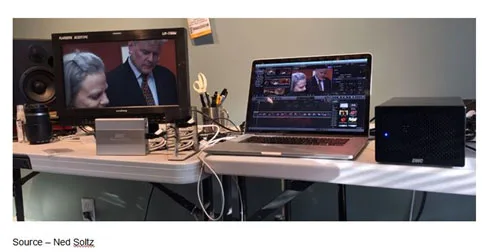 Functionality – Ned Soltz, president of Mopictive (motion picture collective of NYC) snapped this shot of one of his creative workstations to show production and post production don’t require a million-dollar facility. It does, however, require lots of talent, good hardware/software and lots of storage.
Functionality – Ned Soltz, president of Mopictive (motion picture collective of NYC) snapped this shot of one of his creative workstations to show production and post production don’t require a million-dollar facility. It does, however, require lots of talent, good hardware/software and lots of storage.
The production facility may not look like one you’d see at Disney, Fox, NBC or Lionsgate but the creative output can be as spectacular (and saleable).
Every major 4K streaming content provider – Netflix, Amazon, M-Go, Dish, Facebook, YouTube, Yahoo, you-name-it – is relying on 4K content from independent companies. Not just for blockbusters but also for niche market content or as Chris Anderson put it back in 2004 – Long Tail content that satisfies smaller groups of devoted viewers.
All the Indies have to do is shoot and produce solid content (without it getting hijacked or hacked along the way) and negotiate the right distribution agreement.
But that isn’t always easy!
Small houses like Millennium had The Expendables 3 released on the Web a number of weeks before its official release costing them millions.
They got together with several other small studios to form an antipiracy coalition called the Internet Security Task Force to mobilize small businesses in the television, music, game and software industries against online theft.
It seems like only a few years ago another organization – RIAA (Recording Industry Association of America) – took up a similar campaign and it got real ugly.
Indies at NAB shared similar tales where weeks and even months of content went missing and the loss was devastating because it was … personal.
We agree with the goals of the Internet Security Task Force.
But after-the-fact pursuit is expensive and usually only encourages the “fringe” community to launch more attacks.
Some of the IP/OTT (Internet Protocol/Over The Top) streaming services such as Netflix have taken a pro-active step in protecting content by encrypting the content so even if it is pirated, the content is meaningless so the VOD (video on demand) and content owner are protected.
As Anakin Skywalker noted, “We can make things the way we want them to be!’
Proactive, Not Reactive
It’s just makes more sense to protect the content more aggressively from ingest to distribution.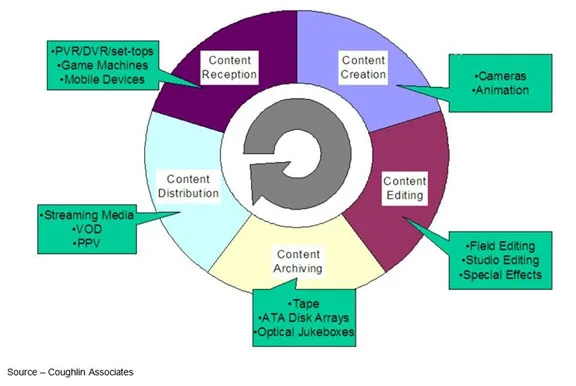
Creative Process – Producing an award-winning film requires individuals to follow through on a number of vital steps from capture to production, post production and distribution.
We didn’t meet an Indie filmmaker at NAB that wasn’t already knee deep in 4K production to meet the shift in demand/expectations.
The new cameras like Blackmagic’s low-cost, high-performance cameras were capturing 4k resolution, wide color gamut and High Dynamic Range (HDR) at the rate of 10GB per minute.
Most (62 percent, according to Coughlin Associates) are shooting 2-10 hours of content for every hour of completed work they produce.
It’s little wonder that a small project can suck up 27TB, a large project 133.5TB and an intensive multi-camera project can consume 398TB of storage. And you’ve just approached the first big decision you have to make – cloud or local storage.
Cloud folks make an almost irresistible offer – hundreds of TB of storage for virtually nothing.
Oh sure, there may be some issues; but OMG, the price is ridiculously good.
What are the possible problems? Security – hackers/thieves love big cloud opportunities/challenges. And if you read the fine print of the agreement, the cloud folks aren’t responsible for much.
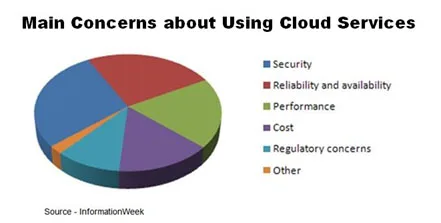 Cloud Faith – While the promises and low-cost of cloud storage and unsecured distribution are irresistible for thousands of organizations, many IT (information technology) folks and independent filmmakers still have major concerns about security and reliability.
Cloud Faith – While the promises and low-cost of cloud storage and unsecured distribution are irresistible for thousands of organizations, many IT (information technology) folks and independent filmmakers still have major concerns about security and reliability.
With news of another attack or theft (let’s call it what it is) in the news every day, there are good reasons most filmmakers want their content where they can see it, touch it.
Saving Every Frame, Pixel
There are a lot of different external storage solutions available – including both hardware and software RAID systems.
Hardware RAID has been around for years, but unlike your production workstation that is flexible as to what it lets you do; hardware RAID has a lot of limitations/restrictions.
Today’s workstations have all the power you need to manage newer software RAID that lets you set RAID levels – zero, 4,5 or any combination – to meet your project’s needs and provide peace of mind. Want to pull a RAID 5 drive out of the case and work on the content somewhere else? No problem.
If you’d like to know when you’re overworking one particular drive, smart technology will tell you; but it’s usually just about the time the drive fails. Newer predictive software RAID monitors the health of the drives and uses predictive analysis to give you a heads up weeks or more ahead of time so you can get a spare drive and can do the replacement at your leisure, instead of at the worst possible moment.
Obi-Won Kenobi said, “I will do what I must.”
Because of the growing concern filmmakers have in keeping RAW, work-in-progress and final cut content unavailable to outsiders, local RAID storage also ensures your content is reliably protected from damage or loss when you move content from specialist to specialists – editors, FX (special effects), colorists, audio, etc.
SneakerNet – Rather than send working files over the Internet to specialist to do their work and return the project to the filmmaker, most still rely on delivery services like FedEx and UPS to keep film work away from hackers and hijackers.
The Internet is becoming more robust and reliable – hence the rapid growth of anywhere, anytime, any device viewing. But still, moving 10-20TB of content from Point A to Point B (especially when it’s your creative best) requires more faith in machines and nature than most of us have.
Reliable Content Transfer
That’s why the most commonly used network delivery of worker copies is the SneakeNet – HD copies sent to the various specialists so he/she can turn it into really good, compelling content.
As Tom Coughlin (Coughlin Assoc) said recently, “There are two classes of filmmakers: those who have lost some of their work at one time or another and as a result back up everything and those who haven’t lost anything … yet! and only makes the requisite insurance copy. The latter is walking too close to the cliff’s edge.”
For an end-to-end solution, almost every filmmaker’s 4K project requires at least 10X the amount of storage capacity compared to the final film that is “in the can.”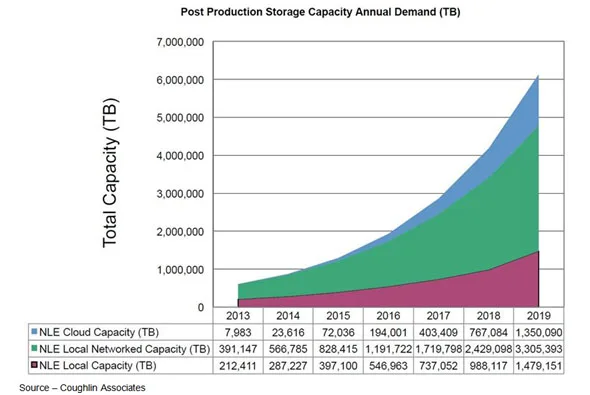
Safer at Home – Filmmakers large and small continue to rely on local storage of their projects, even though it requires an expanding library of storage solutions with software RAID to ensure private materials stay private.
It’s little wonder that most filmmakers will continue to rely on lots of local storage.
Finding Audience
New, over-the-top direct content distribution is enabling consumers to access full UHD content today and new hardware/software content creation tools are delivering a new viewing experience to people worldwide.
Despite the fact that every major 4K streaming content provider is relying on 4K material from independents, they aren’t exactly beating a path to your door, are they?
And as we know, broadcast and cable providers are notoriously slow to change.
Anakin Skywalker commented, “We lost something.”
In their defense though, the incentives are totally different for over-the-top distributors than yesterday’s entertainment delivery solutions.
The new streaming service can efficiently and effectively serve even a small population of early adopters by delivering long tail content to them profitably on a one-to-one basis.
 As a result, they can offer premium-quality content to customers who want to pay for it without having to make costly or complex changes to a legacy broadcasting backbone.
As a result, they can offer premium-quality content to customers who want to pay for it without having to make costly or complex changes to a legacy broadcasting backbone.
Marketing your 4K content and reaching broad or niche markets is still very much the wild, wild West. There are the major network/studio, streaming services and there are a growing number of OTT channel opportunities focused on delivering long-tail niche market segments.
It goes without saying that if you’re not a multi-million dollar company, it’s difficult to be a game changer. But today, we’ve reached the point where anyone can make a broadcast length, award- (and viewer) winning movie on a reasonable budget.
It can be done without a mainstream distribution system in place.
If you want a distribution relationship, begin by signing up and getting showings According to USA Today’s recent film festival survey, here are the top events for your film:
- Cinequests Film Festival – San Jose, CA
- Cleveland International Film Festival
- Pan African Film Festival – Atlanta, LA
- Santa Barbara International Film Festival
- Full Frame Documentary Film Festival – Durham, NC
- True/False Film Fest – Columbia, Mo
- Napa Valley Film Festival – Napa Valley, CA
- Palm Springs International ShortFest
- Seattle International Film Festival
- Outfest Los Angeles LGBT Film Mestival
Contenders also included the DC Shorts Film Festival, Miami International Film Festival, Breckenridge Film Festival, Hamptons International Film Festival, AFI DOCS, Sundance Film Festival, South by Southwest Film, Telluride Film Festival, Tribeca Film Festival, Chicago International Childrens Festival and, of course, those near you
Whether your new film, show, series ends up on YouTube, Facebook, iTunes, Amazon or any other streaming channel, network-controlled entertainment will close after a very profitable and long run.
Your biggest challenge will continue to be to get your content “found” by people interested in the specific content – entertainment, education, documentary, but this will be the same challenge studios everywhere will have because there won’t be anything like a “captive audience” in the new democratized viewing arena.
Everyone will be competing to get mind and eyeball share of the global viewing audience opening new opportunities for independent filmmakers with new, different, refreshing content.
 Just remember what Obi-Wan Kenobi said, “Let’s move on. We have a battle to win here.”
Just remember what Obi-Wan Kenobi said, “Let’s move on. We have a battle to win here.”
# # #